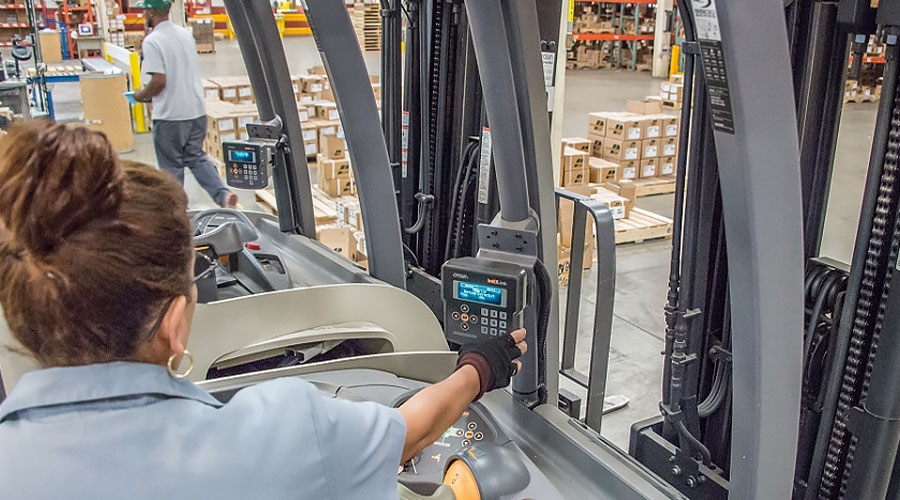Technology Can Help Enhance Workforce Focus on Safety

Ask any supply chain or warehouse manager about their priorities and safety is generally near the top of the list. But the space between setting safety goals and achieving them can include many demanding tasks. The safety journey is becoming even more challenging as managers contend with increased employee turnover in the warehouse and an influx of new or less experienced forklift operators.
Dealing with issues created by recent workforce challenges requires frequent operator training and more oversight. At the same time, warehouse managers have also been confronted with higher volumes and productivity expectations that require a large portion of their time and effort. Thankfully, the spread of connected technology and the evolution of forklift telematics can provide much-needed assistance in encouraging a strong forklift safety culture. When used strategically, these technologies can help reinforce training and ensure the forklift fleet is properly maintained, reducing the potential for safety issues and unexpected downtime.
As the supply chain becomes more connected, individual components and equipment become interconnected and share a wealth of forklift data, including operational- and health-related information, in near real-time. Forklift telematics systems, such as Crown’s InfoLinkâ operator and fleet management system, can gather this data – which can then be aggregated and analyzed to identify trends and opportunities to improve productivity, efficiency and safety.
There are several ways this connected technology and the data analysis it enables can help encourage proper forklift maintenance and achievement of the desired workplace safety levels.
- A telematics system can help ensure that operators appropriately complete pre-shift inspections, which can identify potential operational and safety issues. It can even provide visual guidance regarding the various components and systems to be evaluated to help less experienced operators correctly complete the inspection.
- Connected forklifts can generate maintenance notifications to alert when a maintenance or repair issue has been identified, providing an opportunity to ensure it is resolved. They can even share diagnostic information with service technicians to help expedite troubleshooting and repair.
- Telematics can record and report individual forklift utilization to provide a better understanding of how and when individual forklifts are being used. This can assist in completing planned maintenance following the manufacturer’s service recommendations.
- A connected maintenance program can gather event codes and their associated causes and resolutions for individual forklifts and compare them with aggregated data across thousands of vehicles. This data can be used to predict issues and provide opportunities to initiate proactive repairs that help avoid safety issues, operational disruptions and unplanned downtime.
- A connected system, such as Crown’s FleetSTATS® Fleet Maintenance Management System, offers a method for capturing and analyzing total maintenance costs of individual forklifts or entire fleets within single locations or across multiple locations. The system can help users select appropriate maintenance programs, control costs and make informed repair/replace decisions, resulting in an overall healthier fleet.
- Service technicians can leverage connected electronic systems to troubleshoot issues and document resolutions more efficiently, helping to expedite maintenance and repair.
Supply chain constraints and shortages are putting more attention on the importance of maintaining a safe working environment for operators and pedestrians. While an effective training program is vital to creating and maintaining a strong forklift safety culture, properly maintained equipment can function as designed, with all of its safety systems doing their job to support safe operation. With increased demands coming from all sides, forward thinking warehouse and fleet managers are also using technology to help monitor and enhance the health and performance of the forklift fleet, which can improve the safety of operators no matter what their experience level.